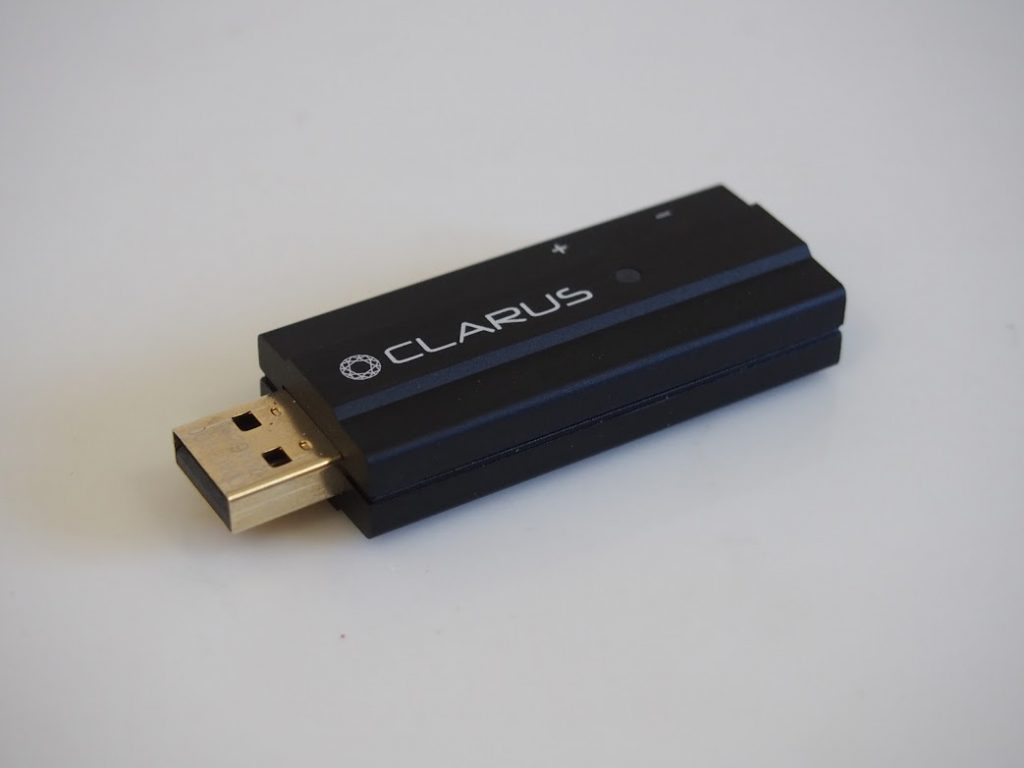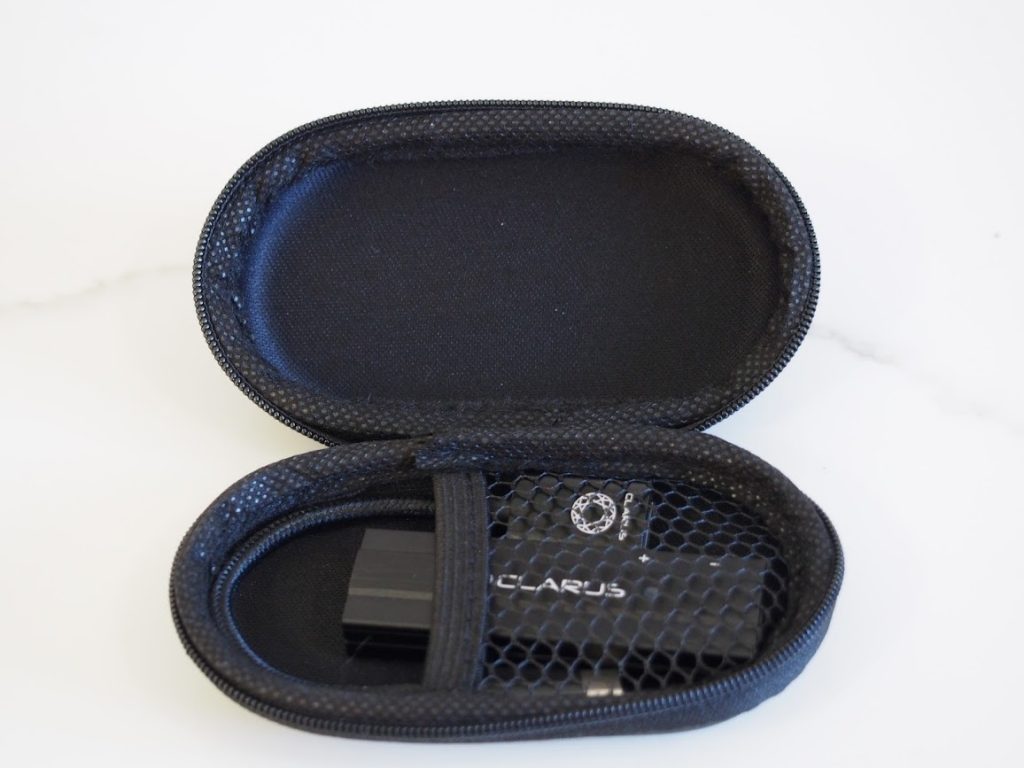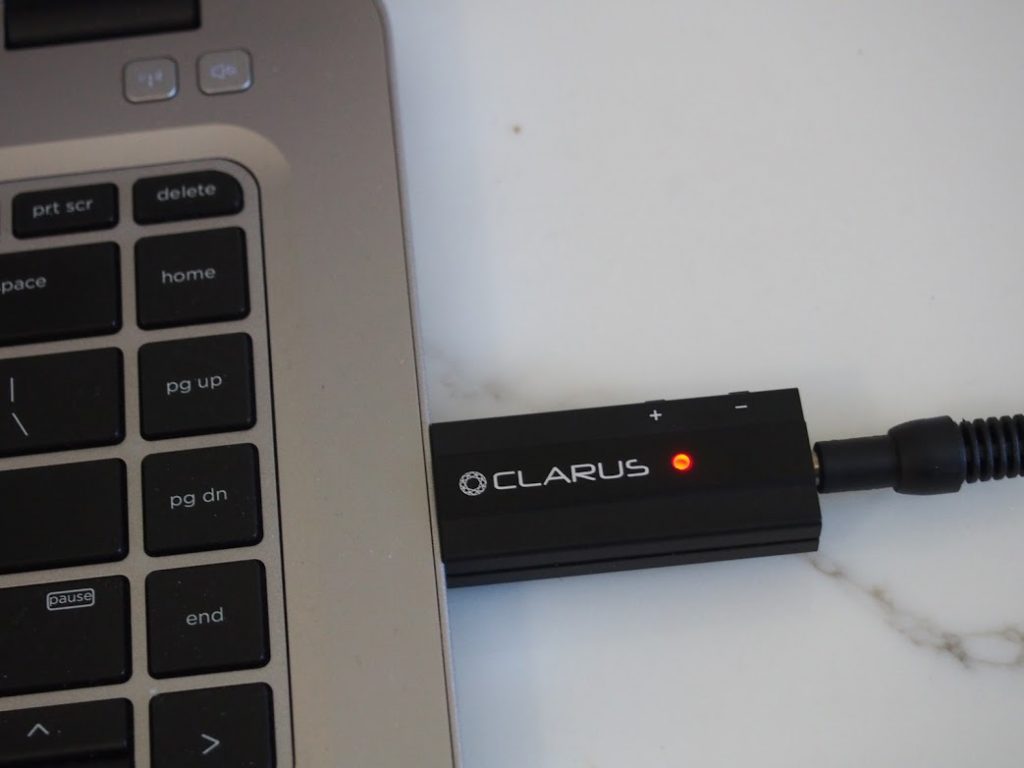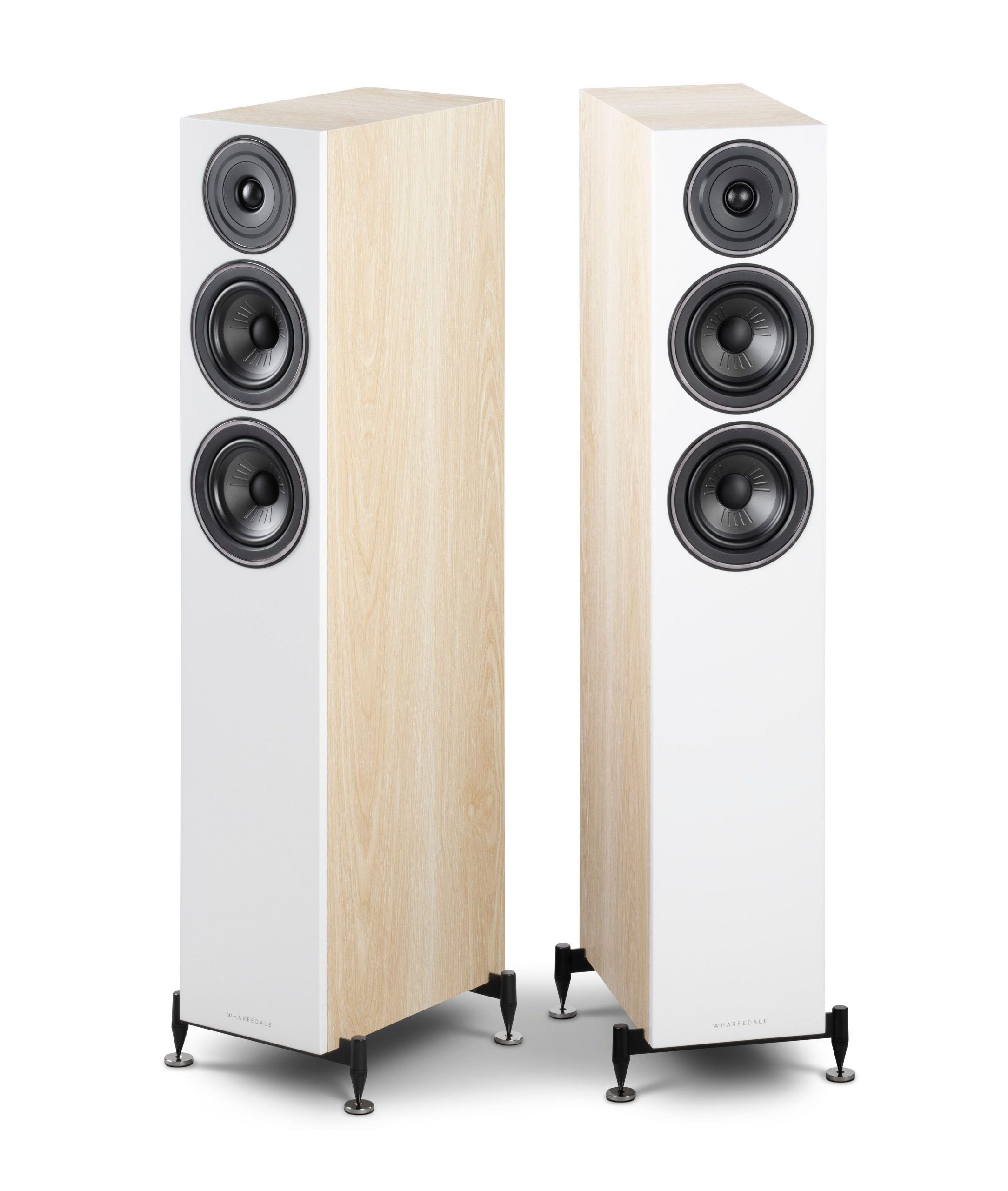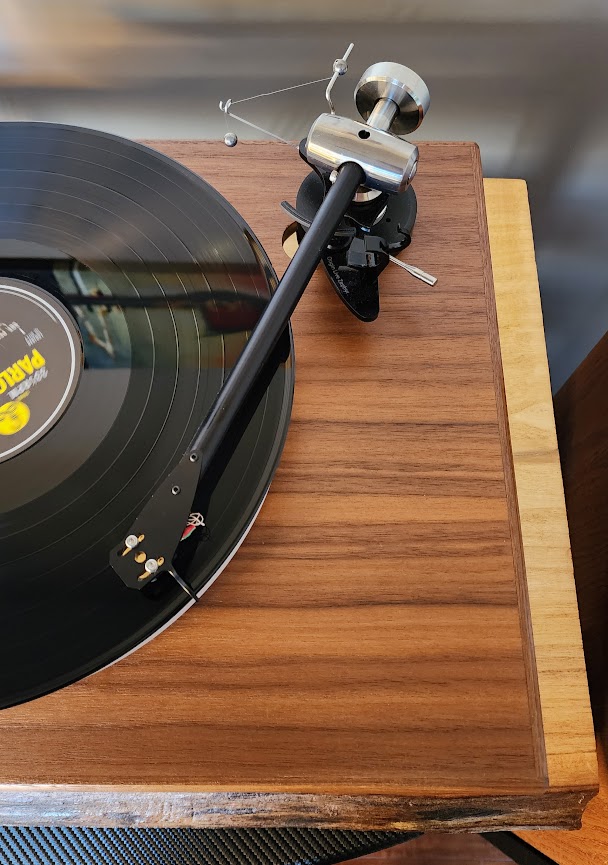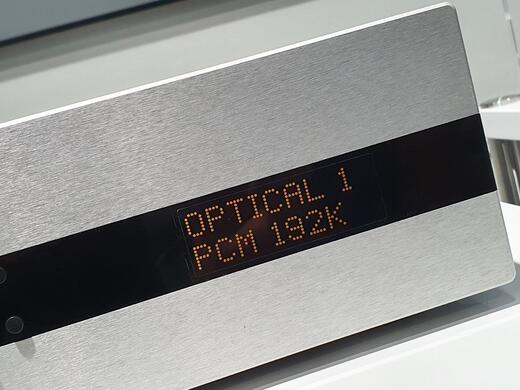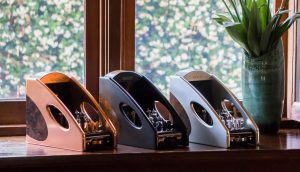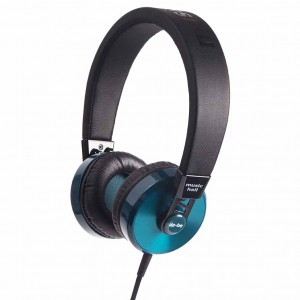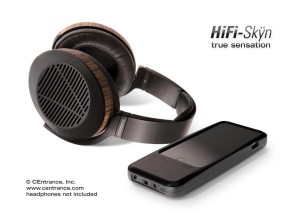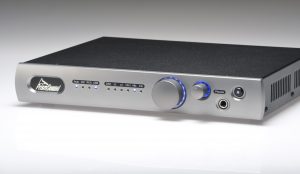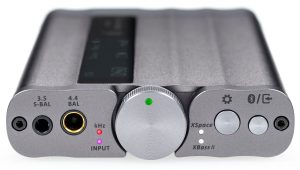In December of 2020, Clarus Cable released the Coda DAC/headphone amplifier ($300), giving the audiophile on-the-go a new and elevated option for taking music everywhere. Utilizing the ESS Professional Series SABRE DAC, the CODA plugs directly into your laptop via USB-A, and features a 3.5mm headphone jack on the other end. Inside the solidly-constructed device are a high precision audio grade clock designed to reduce digital jitter, audio grade film capacitors, 1% tolerance metal film resistors, and tight power supply regulation using multi-stage, low-noise, high ripple rejection CMOS-based regulators, within a component the size of a pack of gum. All of this results in a 124dB DNR and -112 THD+N.
On the CODA DAC itself are two buttons for volume up and down, and an LED to indicate sample rate. Sample rates are user-selectable (I recommend reading the user guide on the website before using the CODA, you'll save yourself some learning curve). There are three sample rates available: standard definition, high definition, and MQA (Master Quality Authenticated). Knowing and changing these settings makes all the difference in your enjoyment of the CODA DAC. It supports USB 1.1 and 2.0 and can natively handle 32-bit kHz PCM and up to DoP128. As the CODA is an MQA renderer, it works well with Qobuz, Tidal, and other Hi-Res streaming services. The firmware is upgradable by the user, allowing the CODA to stay up-to-date.
Unboxing
The CODA comes packaged in a clever and handy carrying case, which includes the DAC, a cover for the USB end, and a USB-C cable for connecting to a smartphone or other device that doesn't accept USB-A. Once unboxed, there is a real weight to the CODA, and it slides snugly into the USB port of my laptop. Everything about the Clarus CODA DAC feels high-quality.
Listening
For listening tests, I am using my Sennheiser HD598 open back headphones. Again, the connection of the headphones into the CODA DAC is snug and feels solid. I pull up Qobuz and reach for a familiar reference track to begin my evaluation. "Sailing to Philadelphia" by Mark Knopfler (24-bit/88.2kHz) opens up right out of the gate with excellent separation and a wide soundstage. Vocals have a rich thickness. Low end is a bit light, but smooth. Acoustic instruments are somewhat laid back in the mix while Knopfler's electric leads stand out more dominantly.
On Lyle Lovett's moving ballad "Baltimore," (16-bit/44.1kHz) I find that the CODA DAC transmits the delicate details of this track beautifully. There are subtle harmonics from the acoustic guitars, breaths between Lovett's vocal lines, even the pick hitting the strings—and all of this needs to be heard properly when listening to this tear-jerker. The piano comes from underneath and lifts the song, just a supporting actor in this short play. There needs to be a live presence to this whole piece, five minutes of transportation. Here, the Clarus CODA DAC delivers, even with a fairly modest set of headphones.
Switching over to the classic John Coltrane release A Love Supreme (24-bit/96kHz), this is where things really develop and the CODA DAC shines brightly. Immediately, the upright bass is deep with full, round notes. The album expands into a large soundstage that puts me right there in the experience. Besides the width of the hard-panned sax and drums, there is depth here with clarity and emotion in the piano. There is ideal crispness in the ringing from the rhythmic ride cymbal. Coltrane's sax comes from another plane. The feel is very organic and lush, more analog than hi-res digital.
Nathanial Rateliff's "And It's Still Alright" (24-bit/88.2kHz) takes on much more of a narrow, barroom feel that reminds me just how much I miss live music. His vocals are certainly the most prominent element in this recording, sitting right on top of the strumming acoustic guitars and ethereal keyboards. The bass is more droning, but full. There's a purity and realness here that is incredibly soothing. I want to go back to an earlier note from my introduction of the CODA DAC. This was a track I had listened to before reading the manual and realizing that the sample rates were user selectable. Once switching to MQA, the keyboards became much creamier, and the acoustic guitars separated in the channels much more. Reading the manual makes a huge difference!
Not everything that I listen to on my laptop comes from Qobuz. I have much of my CD library ripped into iTunes as 320kbps to supply my iPods for travel, and for playlists. This is the less audiophile and more practical side of my daily musical life.
The first thing that I do is to switch the Clarus CODA DAC from the Magenta (MQA) mode to the Blue (standard) mode. Then, pulling up Neil Young's On the Beach, and clicking on "Ambulance Blues" I dig into some vintage one-note-Neil. I don't feel like I've made a tremendous step down here. There is still a very real and live presence with this recording. At 2:17 into the song, a tambourine rings in the distant left channel. For having relatively few instruments in this track, the staging is large.
On Sir Paul McCartney's "Long Tailed Winter Bird," the introductory acoustic guitar seems to come from over my head. Once the drums come in, the track widens. Bass is deep and heavy. The CODA DAC is doing an admirable job of giving this humble iTunes rip a large representation. There is a huge amount of layering in this song and I am hearing everything perfectly clear.
Wrapping it Up
At $300, the Clarus CODA DAC is a tremendous value for the audiophile looking for high-end portability. The CODA offers the performance of a component DAC, along with jitter reduction, and delivers audiophile headphone users and travelers something to celebrate. The CODA is easy to carry, well built, a reasonable investment, and impresses on all levels. It will now be a part of my traveling kit from here on out.
CODA DAC
Retail: $300
Clarus Cable




